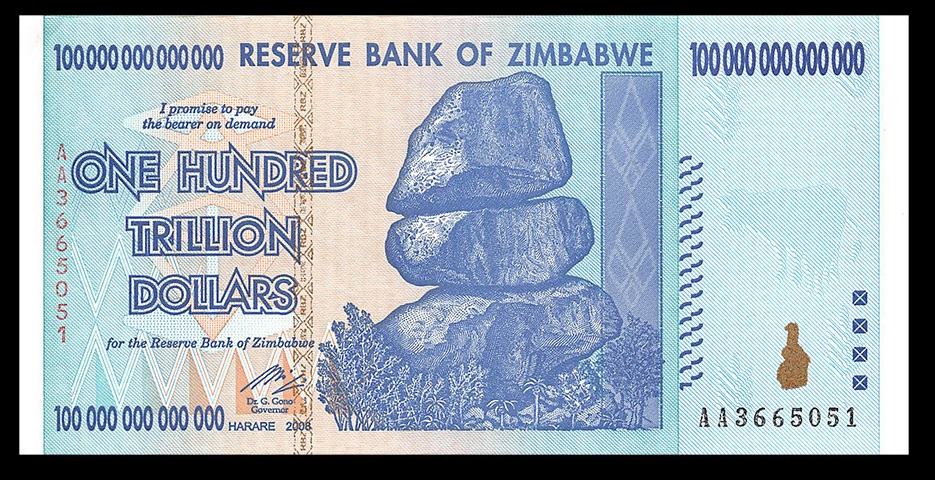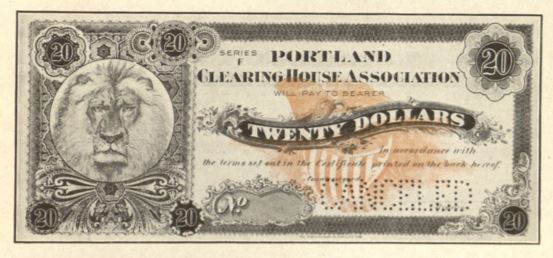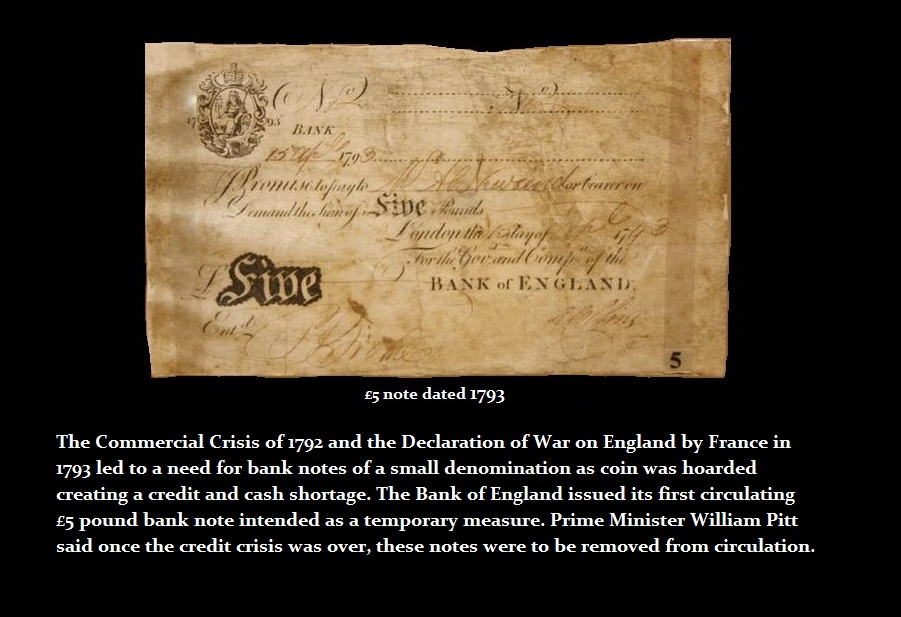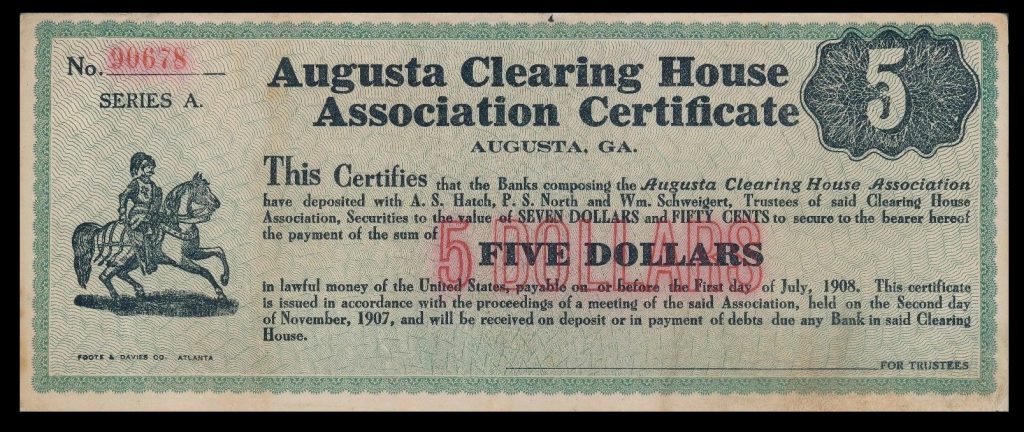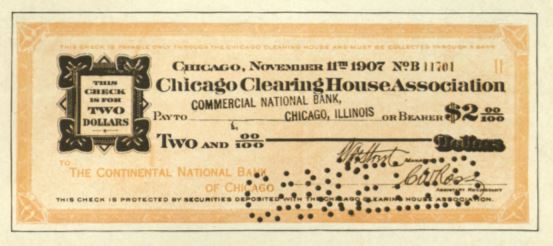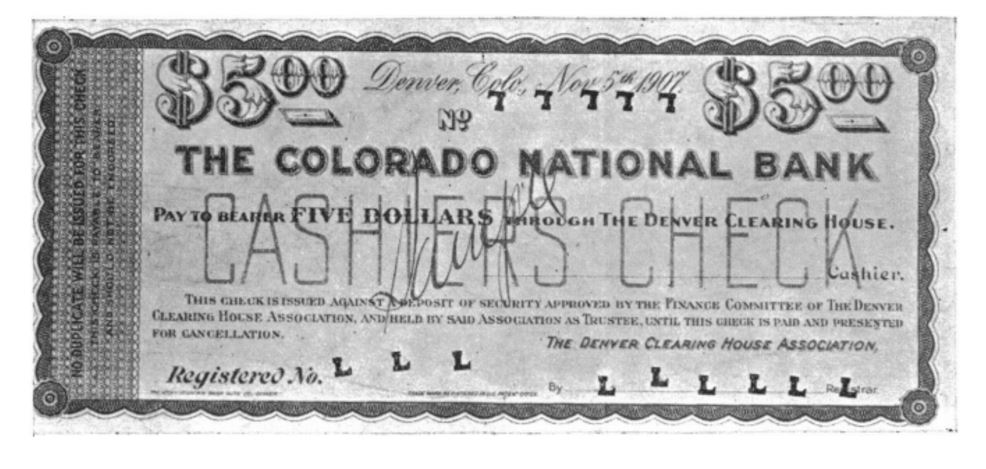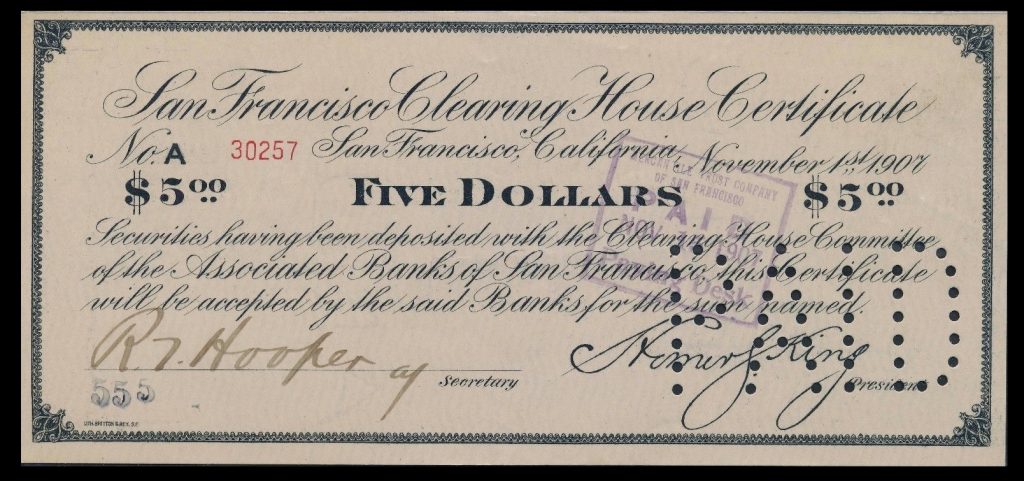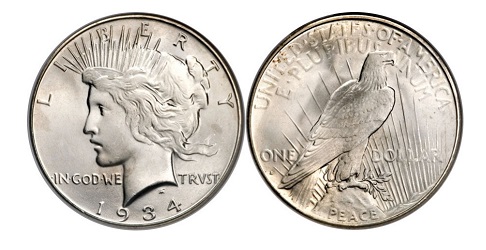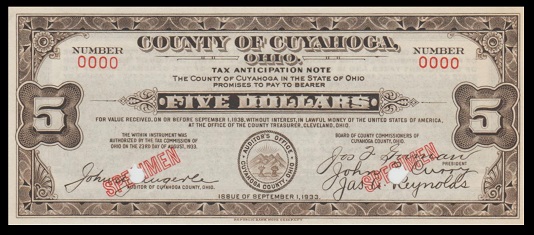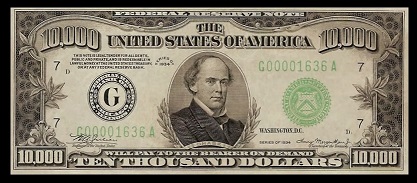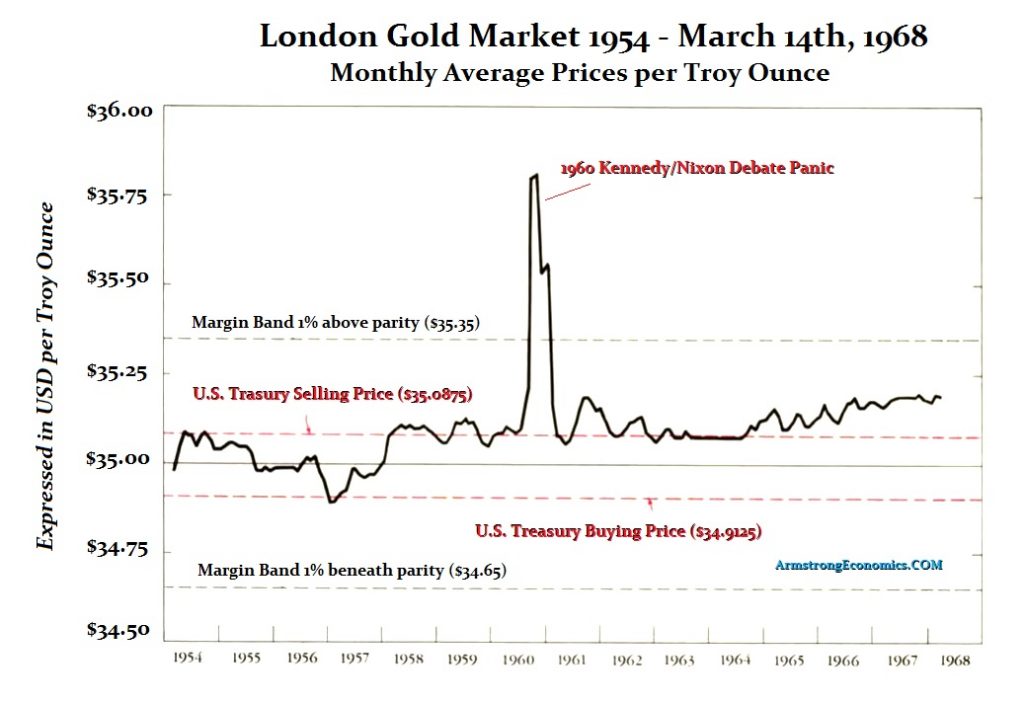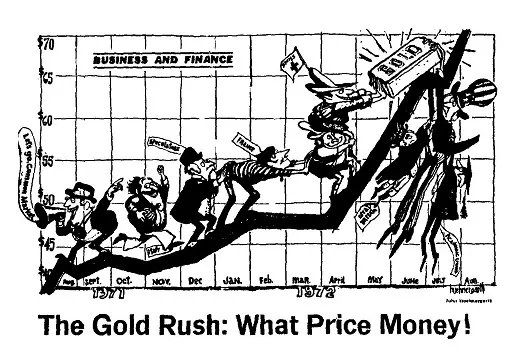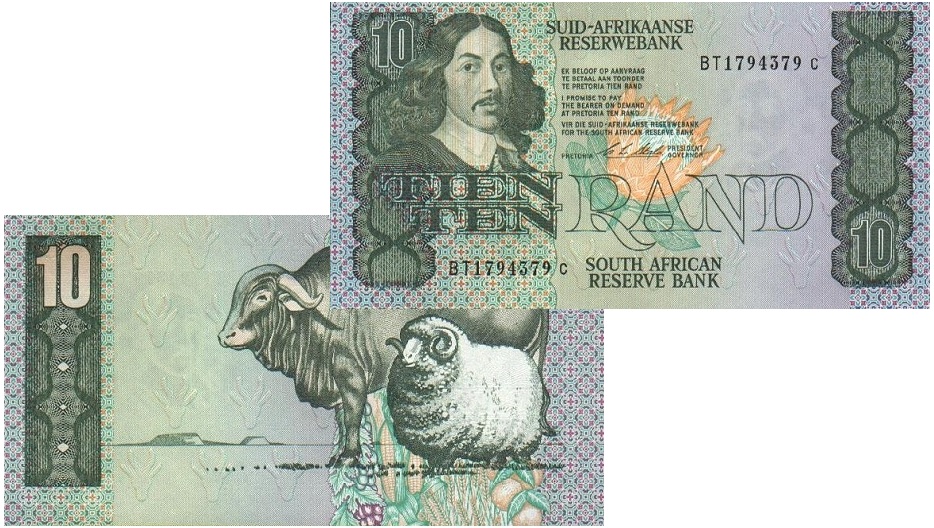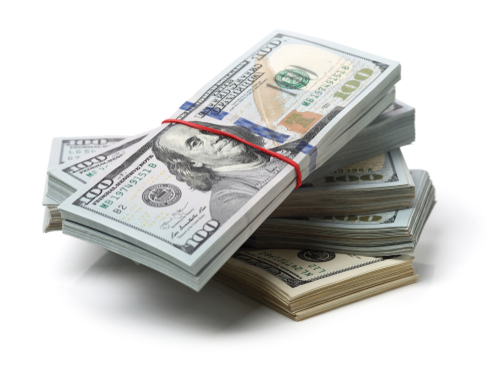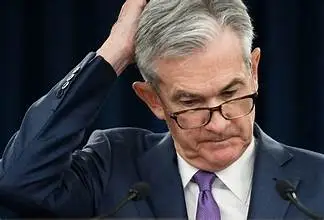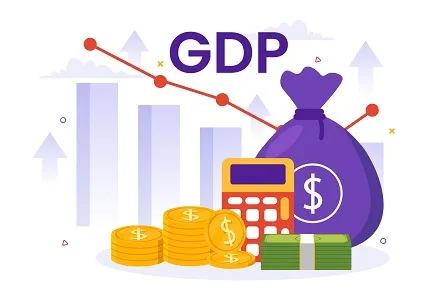Throughout history there has been countless two-tier monetary systems where at times there have been a local currency issued by the immediate government, yet the people rely upon the currency of another government. Such periods are interesting for they are not official but emerge by the people rather than through a decree of a government. There are also instances where foreign currencies circulate against local currencies as U.S. dollars did for years in Russia to Asia. Such two-tier monetary systems have emerged when there have been shortages in local currencies or distrust of local currencies as emerged with the Zimbabwe hyperinflation. But there are also instances where there have been a two-tier monetary systems that are officially established by the state such as the Rand and Financial Rand in South Africa which was finally abolished in 1995, and the two-tier gold system under Bretton Woods established in 1968. There are also emergency two-tier currency issues that are private and exist along side the official currency of the state.

Pictured here is an Indian imitation of a Roman gold Aureus of Septimus Severus (193-211AD). This is not a counterfeit for it actually was gold and it weighed more than the real thing. There are hoards of Roman Republican coinage discovered in India dated back to 150BC. Whatever money was being used within India, Roman coinage made its way there through trade for spices, silks, and dyes. Roman coinage was recognized as a medium of exchange in India. So here we have a gold coin struck in India which is over-weight because its acceptance in this form was more respected than then raw gold itself.
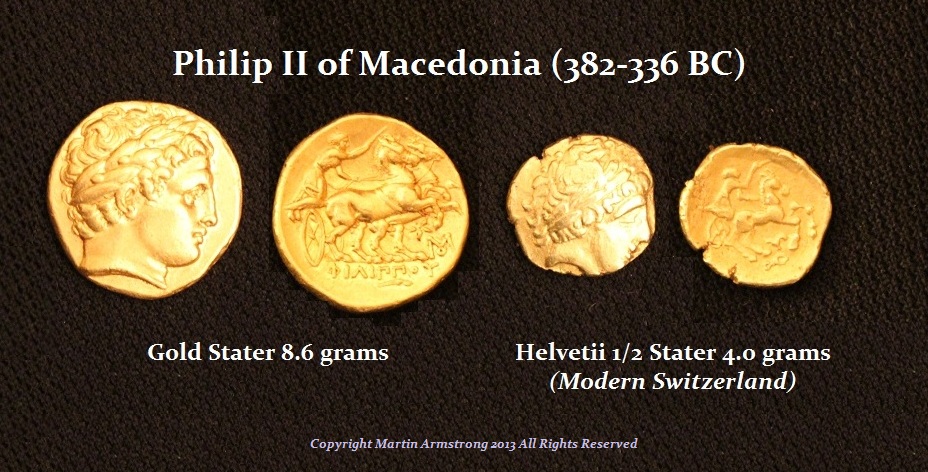 The recognition of Roman coinage as a medium of exchange in India is not merely confirmed by Indian imitations, it further demonstrates that there was a shortage of a medium of exchange which was met by imitating Roman coinage. Therefore, imitations appear supplementing local currency that has been consistent throughout history during shortages.
The recognition of Roman coinage as a medium of exchange in India is not merely confirmed by Indian imitations, it further demonstrates that there was a shortage of a medium of exchange which was met by imitating Roman coinage. Therefore, imitations appear supplementing local currency that has been consistent throughout history during shortages.
We even find imitations of ancient Greek coinage of Philip II (382-336BC) among the Swiss tribe known as the Helvetii. In this case the coin is underweight as a Stater, but was probably used as a Half-Stater given that such foreign coins in Switzerland were highly prized.

Even when we turn to Asia, we find the human response to be the same in ancient times as it was in Zimbabwe. The progression of Japanese Emperors devalued the outstanding money supply upon coming to the throne. The constant issue of a new coin with its value being decreed as worth 10 times that of the old coinage in circulation ruined the economy and undermined the integrity of the state. This practice created the incentive to rely upon barter and Chinese coins in Japan. Finally, the people just stopped accepting the coinage of the Emperor and Japanese Emperors lost the ability to create money – people simply refused to accept it. The state’s assumption of the power to decree value of coinage (fiat) only produced an accumulative inflation during the Nara Period and early Heian Period that remains one of the highest in history. It would have been as if government printed a new one dollar bill and declared arbitrarily that all one dollar bills dated today are worth 10 old one dollar bills. This wiped out people’s savings and thus the people stopped hoarding Japanese coins and turned to Chinese coinage and bags of rice.
 Consequently, this belief of an assumption of power to simply decree the value of money as the government so pleased claiming the Emperor is chosen by God, destroyed the Japanese economy. This practice simply created a two-tier monetary system whereby Japanese coinage just fell out of use and the people returned to a barter system with tangible goods possessing some utility value such as rice and silk. Only Chinese coins would be used in Japan and Japanese coin production stopped for about 600 years until 1587. Foreign coins appeared in Japan from China, Korea and Annam (now part of North Vietnam) during this period right up until the Meiji era (1868–1912), but this was reflecting international commerce existed much as we see Roman and Greek coins in hoards outside of their regions.
Consequently, this belief of an assumption of power to simply decree the value of money as the government so pleased claiming the Emperor is chosen by God, destroyed the Japanese economy. This practice simply created a two-tier monetary system whereby Japanese coinage just fell out of use and the people returned to a barter system with tangible goods possessing some utility value such as rice and silk. Only Chinese coins would be used in Japan and Japanese coin production stopped for about 600 years until 1587. Foreign coins appeared in Japan from China, Korea and Annam (now part of North Vietnam) during this period right up until the Meiji era (1868–1912), but this was reflecting international commerce existed much as we see Roman and Greek coins in hoards outside of their regions.
 One example of where a private currency has been created in the middle of a financial panic due to a shortage of official currency issued by the state was the events that gave birth to the concept of the need for an “elastic currency” during the 19th century. The Panic of 1873 saw the government make a small gesture to try to calm the panic. The U.S. Treasury did the same thing as Quantitative Easing post-2007 back then as well where it too failed.
One example of where a private currency has been created in the middle of a financial panic due to a shortage of official currency issued by the state was the events that gave birth to the concept of the need for an “elastic currency” during the 19th century. The Panic of 1873 saw the government make a small gesture to try to calm the panic. The U.S. Treasury did the same thing as Quantitative Easing post-2007 back then as well where it too failed.
The US Treasury injected cash by purchasing government bonds. It did NOTHING to help the economy. Why? When confidence crashes, people HOARD money and will not spend it if they fear the future. The cash they injected was hoarded by the banks just as it has been post-2007. Quantitative Easing in this manner NEVER produces inflation nor does it stimulate the economy. Those in government think they came up with a brilliant idea and nobody bothers to look at history or ask: Has this been tried before? Did it work?
The banks got together to create their own “Elastic Money” using the New York Clearing House. Failing to increase the money supply meant that the value of money in purchasing power rises and all assets decline. This is the hallmark of EVERY recession or depression. During the Panic of 1873, the national banks of New York pooled their cash together and collateral into a common fund, and placed this in the hands of a trust committee at the New York Clearing House, which had been founded on October 4th, 1853. The New York Clearing House then issued loan certificates that were receivable at the Clearing-house against this collateral. These certificates were absorbed like cash and could be used to pay off debt balances among members. Ten million dollars’ worth of these certificates were issued at first, but the sum subsequently doubled. This Clearinghouse paper served its purpose admirably functioning as “Elastic Money”.
By October 3rd, 1873 confidence had been returned and $1,000,000 of these certificates was called in to be canceled. The next day, another $1,500,000 more of these certificates were recalled. In the end, not much of this issue was outstanding very long. The Clearing-house scheme was successfully applied also in Boston, Philadelphia, Pittsburgh and other cities, but not in Chicago.
The tool of creating an “Elastic Money” supply was private in nature and was also used during the Panic of 1907 very successfully. This is where we begin to see small denomination notes in circulation that took the form of checks being issued against certificates and in some instances banks issued bearer checks backed by the certificates. The Panic of 1907 was markedly different from other panics for this disrupted the domestic commerce preventing the free circulation of the credits between regions within the country that would typically take place through the bank drafts drawn by one money center upon another. In order words, you write a check on your bank to another who deposits it in their bank and it must go through a central clearing operation.
Clearing House Loan Certificates served a far more important role during the Panic of 1907 than in any previous
panic in American history. They were instruments that represented temporary loans made by the banks banded together as a Clearing House Association. They were then issued to the individual members of that association upon depositing collateral that was acceptable to a Committee. The certificates bore a stated specific rate of interest, and were available to the banks only for use in settling balances among other members of the same association. As Clearing House balances are normally payable in cash, these certificates became “elastic money” that was created backed by collateral and made available for other purposes equal to cash for settlement purposes.
An example of this concept would be you accept a check from one person and endorse it so it may be cashed or used by another. The check represents “money” and becomes a substitute for it in a derivative manner. Various instruments served such purposes during a crisis such as Cashiers’ Checks, Clearing House Checks, Clearing House Scrip and Certificates of Indebtedness. All of these various derivative forms of representative money were issued and circulated freely as money in the communities when there were shortages of cash due to hoarding and a crisis. BitCoin would fall into this derivative form of money today. Historically, some skirted the law while others were subjected to a tax. The Clearing House Loan Certificates were markedly different insofar as they were immediately retired/redeemed as soon as the conditions that had necessitated their issue had passed. It was this quality that created the class of “elastic money” that could be created for the crisis and then retired as the crisis subsided. This trait separates them from BitCoin or using the currency of another country in its stead.
Even the Bank of England charter prohibited other banks from issuing money and that the currency issued had to be backed by gold coin. During a crisis, such as Napoleonic Wars, this restriction was lifted. Britain itself experienced an even greater shortage of coin during the Napoleonic Wars 1797-1813. It was during this historical war when banknotes became common in Britain and there were no gold Guineas issued between 1800 and 1813. The Bank of England was allowed to issue small denomination notes as a temporary measure (“elastic money”), and when the crisis passed, the notes were to be redeemed. This most likely served as the role model for “elastic money” that appeared in the United States during a crisis in the mid-19th century.
During the few months immediately subsequent to the Panic of 1907, Clearing House Associations had sprung into action within 48 hours in New York City. The same plan in general, with variations, was employed from East to West and North to South with numerous cities participating. In the case of New York Clearing House Association, the aggregate issue was about $101,000,000 of these certificates during the panic. The date of the first issue was October 26th, 1907 and the date of the first cancellation was November 14th, 1907. The entire issue had been redeemed by January 30th, 1908, and the date of the final cancellation was March 28th, 1908. The greatest amount of these certificates issued to any one bank was $17,000,000, and the smallest $250,000. The time elapsed from the first issue to the final cancellation was 22 weeks, or 154 days. The New York City Clearing House scrip differs from other issues only in the omission of the name of the bank to which they were issued, the identity of the certificate with the collateral being preserved by means of the certificate numbers, a record of which was confidentially kept at the Clearing House. By this means no attention was drawn to the banks which found it necessary to use them.
In Augusta, Georgia, the Clearing House issued small denominations of $1, $5, $10 and $20. These were secured by collateral set at 50% in excess of the amount issued. It was on November 2nd, 1907, when the banks authorized the issue and had appointed three Trustees. The issue was due to expire on July 1st, 1908 but they became payable at any time during the interim with Clearing House Certificates or lawful money.
The Clearing House of Canton, Ohio Canton was different insofar as this was a manufacturing center and required larger
amounts of cash for pay rolls, which was not available and would have resulted in laying off workers. To save the day, the banks issued checks in three denominations, $5, $10 and $20. The checks were made payable to “ Bearer ” through the
Canton Clearing House Association only and had to be signed by an authorized person connected with the corporation issuing them. These checks failed to provide a money supply for when workers tried to use then, shops had to make change in cash and that only depleted the local supply. Subsequently, the solution was that the checks had to be restricted and were payable to “ Bearer,” through the Clearing House only, in amounts to $1, $2, $5 and $10. These checks had no collateral security backing of them and were accepted purely on the responsibility of the issuing bank. This would serve as the model for Depression Scrip issued during the Great Depression.
Chicago, Illinois in 1907 also issued Clearing House certificates for the first time in its history, failing to adopt this tool during any of the panics during the 19th century. The Chicago Clearing House Loan Certificate was followed the same form as that in New York City. They were issued in early November 1907 with the provision for the deposit of these certificates by any bank. The Clearing House checks were then issued in denominations of $1, $2, $5 and $10, in amount equal to the face value of the certificates on deposit. Therefore, the checks were secured by certificates, which were the collateral. These checks were all made payable through the Clearing House.
In Cleveland, Ohio the Clearing House Loan Certificates and Clearing House check system were both issued with the checks issued against the certificates. However, the Loan Certificates in Cleveland, unlike those of Chicago, were not used for settling balances at the Clearing House. Here the Loan Certificates were issued solely for the purpose of securing the issue of Clearing House Checks.
In Denver, Colorado, Cashiers’ Checks issued in amounts of $5, $10 and $20 by the individual banks were issued against deposits of acceptable collateral with the Finance Committee of the Clearing House. A Registrar was appointed to register and sign all checks before issue. By agreement, the banks would each issue $50,000 of these checks, in order to make the action unanimous.
Des Moines, Iowa this issued Clearing House checks which were secured by approved collateral deposited at the Clearing House Committee, however, all the Bank members of the Clearing House also was pledged for its payment. All member banks took part in that pledge. The Clearing House Loan Certificates of Detroit, Michigan were issued but they did not issue smaller denominations Clearing House checks. The individual banks issued Cashiers’ Checks in amounts of $5 and $10 for that purpose.
 The Clearing House Loan Certificates issued in San Francisco were issued in small denominations and were originally printed on safety paper, but it was soon discovered that this grade of paper would not stand the wear of circulation. They were then replaced with lithographed certificates on bond paper and the previous issued was recalled. This currency was issued against the deposit of Clearing House certificates, and was used by the San Jose Clearing House Association as well as by San Francisco.
The Clearing House Loan Certificates issued in San Francisco were issued in small denominations and were originally printed on safety paper, but it was soon discovered that this grade of paper would not stand the wear of circulation. They were then replaced with lithographed certificates on bond paper and the previous issued was recalled. This currency was issued against the deposit of Clearing House certificates, and was used by the San Jose Clearing House Association as well as by San Francisco.
This was the birth of “Elastic Money” as a substantial medium of exchange that extended down intro the economy and outside of just the financial center clearing house. This prevented a wholesale liquidation of assets to get cash in short supply to settle accounts. The problem is neither the Federal Reserve (Fed) nor the concept of “Elastic Money”. The Fed was originally established in 1913 to act like the New York Clearing House but for all assets outside of Wall Street. Then came World War I the next year in 1914 and Congress ordered the Fed to buy only US government bonds. They never returned the structure of the Fed to what it was originally designed to do.
Hence, today we have Quantitative Easing when central banks buy government paper attempting to stimulate as they tried and failed every time previously. The difference was that the New York Clearing House Certificates were good among security dealers. They were not expanding the money supply nor could they be used for groceries at home.
The certificates were redeemed and those from 1873 are non-existent today because they were used among institutions. If you want to blame anybody or anything – blame the right person or group. What you are doing is blaming a murder on the person who manufactured a gun rather than the person who pulled the trigger. Blame Congress! Not the Fed!
We need a central bank and “Elastic Money” in times of a financial contraction for it is simply a sharp rise for the demand in cash to settle accounts that cannot be met. This then forces the banks to dump assets at losses and recall loans only further exasperating the contraction. In reality, this became a private issue that formed a two-tier monetary system for brief periods of a contraction. The first tier is naturally the state money supply in common use. The second tier is the “Elastic Money” created privately, which automatically expires.
 Therefore, “Elastic Money” fulfills that vital role in an economic contraction of expanding the money supply to meet the sudden demand for cash. The key is this “Elastic Money” cannot be that of government issue for they are always the worst possible fiscal manager and will act out of their self-interest. This is why Mario Draghi of the European Central Bank has completely failed in 10 years to reverse the deflationary contract by merely creating money to buy government debt.
Therefore, “Elastic Money” fulfills that vital role in an economic contraction of expanding the money supply to meet the sudden demand for cash. The key is this “Elastic Money” cannot be that of government issue for they are always the worst possible fiscal manager and will act out of their self-interest. This is why Mario Draghi of the European Central Bank has completely failed in 10 years to reverse the deflationary contract by merely creating money to buy government debt.
During the Great Depression, the Federal Reserve had now been in place since 1913. While its power was to be able to create “Elastic Money” in the middle of a contraction, the Fed failed to fulfill that role once government gets involved. The political self-interest takes hold and becomes dominant. The Fed was acting as Merkel has oppressing Europe as a hold with her demands of austerity. The Fed had excess gold pouring into the country fleeing Europe, but the Fed did not accommodate by increasing the money supply. Instead, the Fed lowered interest rates dramatically from 6% to 1%, with no effect of stabilizing the economy.
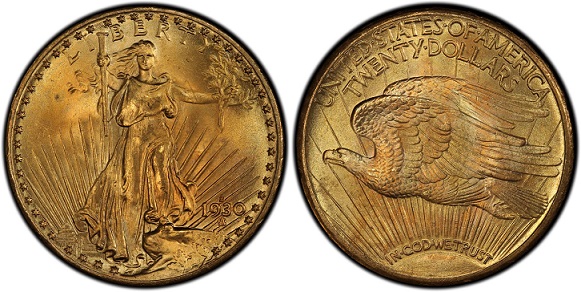 As the economy contracted even worse following the 1931 Sovereign Debt Defaults throughout Europe, Asia, and South America, a major banking crisis unfolded and cash was in desperate supply. The U.S. Mint had stopped producing silver dollars in 1929. As the crisis unfolding, the Mint resumed producing silver dollars in 1934 and continued into 1935 before stopping the issue because people just hoarded the coins. The $20 gold coins in 1928 saw a production of 8.8 million, but in 1929, in an effort to stop the bubble, production was cut to 1.7 million and then in 1930 it collapsed to 74,000. As the contraction was massive, in 1931 production of the $20 gold piece was increased to about 3 million dropping to 1.1 million in 1932 and the 445,500 in 1933 that were never put into circulation.
As the economy contracted even worse following the 1931 Sovereign Debt Defaults throughout Europe, Asia, and South America, a major banking crisis unfolded and cash was in desperate supply. The U.S. Mint had stopped producing silver dollars in 1929. As the crisis unfolding, the Mint resumed producing silver dollars in 1934 and continued into 1935 before stopping the issue because people just hoarded the coins. The $20 gold coins in 1928 saw a production of 8.8 million, but in 1929, in an effort to stop the bubble, production was cut to 1.7 million and then in 1930 it collapsed to 74,000. As the contraction was massive, in 1931 production of the $20 gold piece was increased to about 3 million dropping to 1.1 million in 1932 and the 445,500 in 1933 that were never put into circulation.
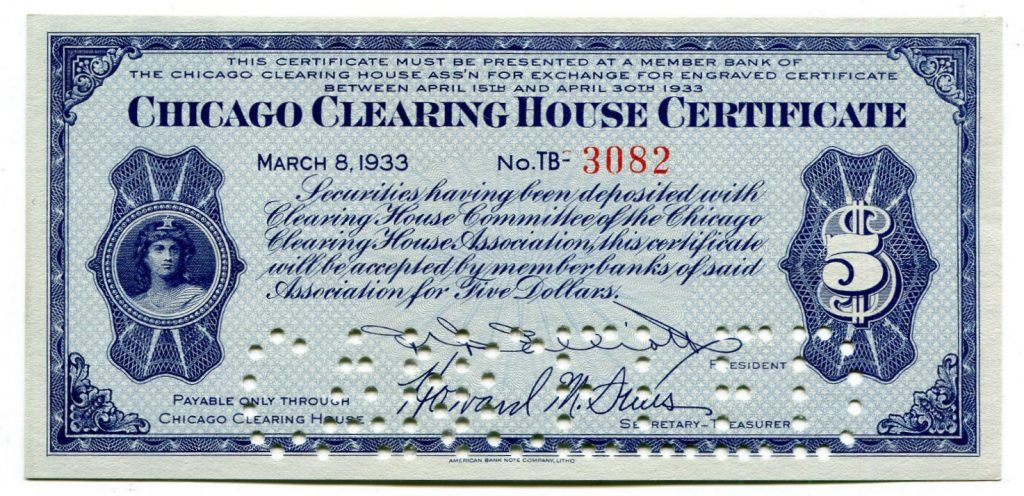
We find that during the Great Depression the Clearing House certificates were reintroduced by many of the leading cities including Chicago, who had previously refrained from such issues during the 19th century. However, you will notice that they were issued during 1933 thanks to the collapse of about 9,000 banks caused by fears of Roosevelt’s “managed currency” he eluded to during the 1932 election. By 1930, nearly 1200 banks had failed, and even the Sovereign Debt Crisis hit in 1931, did not lead to the massive bank failures inspired by Roosevelt’s election. True, people began to hoard money during the beginning of the Great Depression as they always do. However, it was the election of 1932 that really caused the panic.
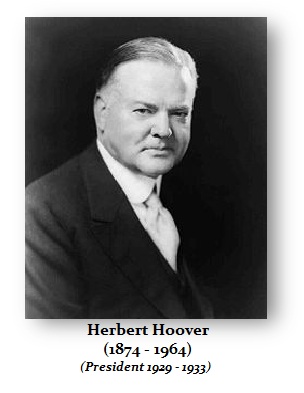 On June 6, 1932, President Hoover signed into law the new Revenue Act which increased income taxes and corporation taxes along with a variety of excise taxes under the theory that austerity was necessary – raising taxes to help cover costs of stimulation was a disaster and sent the stock market into its July 1932 low. The Europeans saw Roosevelt as the populist and were sure Hoover would win much as they believed Hillary Clinton would defeat Donald Trump. During the election Roosevelt misrepresented everything and blamed Hoover for creating the Depression claiming it spread to Europe from the United States, which was exactly opposite.
On June 6, 1932, President Hoover signed into law the new Revenue Act which increased income taxes and corporation taxes along with a variety of excise taxes under the theory that austerity was necessary – raising taxes to help cover costs of stimulation was a disaster and sent the stock market into its July 1932 low. The Europeans saw Roosevelt as the populist and were sure Hoover would win much as they believed Hillary Clinton would defeat Donald Trump. During the election Roosevelt misrepresented everything and blamed Hoover for creating the Depression claiming it spread to Europe from the United States, which was exactly opposite.
Then the focus began to turn to the upcoming presidential elections in November 1932. The most serious problems resulting from Roosevelt’s statements began to arise over his position on currency. He had made several vague statements in reference to a “managed currency” but distinctly omitted the word “gold.” On the eve before the elections, pressure from many sectors demanded that Roosevelt clarify his position. He did. He pledged that he would not abandon the gold standard and inferred that concerns in that respect were not warranted.
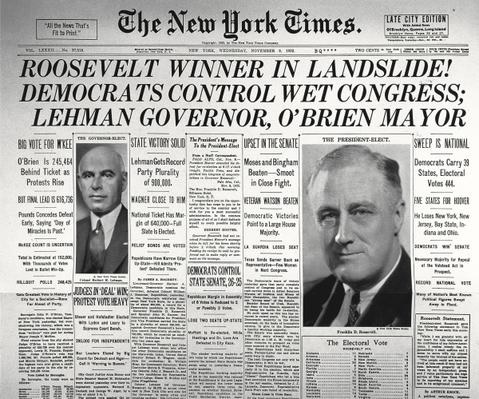 Nevertheless, the rumors that Roosevelt would confiscate gold or abandon the gold standard led to a panic going into the elections. By October 1932, about 1200 banks had failed that month alone as people were frantic to withdraw their money before the election. People were in a state of panic rushing to all banks and demanding their money in coin. Anyone who had money withdrew it much as they did in Germany 1918 with the Communist Revolution installed the Weimar Republic. Americans hoarded their cash and this created a massive wave of deflation. The rumors were so massive that even France was concerned enough about the “populist” Roosevelt would devalue the dollar that they withdrew all their gold reserves from the New York Federal Reserve on June 14th, 1932.
Nevertheless, the rumors that Roosevelt would confiscate gold or abandon the gold standard led to a panic going into the elections. By October 1932, about 1200 banks had failed that month alone as people were frantic to withdraw their money before the election. People were in a state of panic rushing to all banks and demanding their money in coin. Anyone who had money withdrew it much as they did in Germany 1918 with the Communist Revolution installed the Weimar Republic. Americans hoarded their cash and this created a massive wave of deflation. The rumors were so massive that even France was concerned enough about the “populist” Roosevelt would devalue the dollar that they withdrew all their gold reserves from the New York Federal Reserve on June 14th, 1932.
Nevada was the first state to impose restriction on November 1st, 1932 Lt. Governor Griswold declared a state banking holiday for 12 days. Nothing would stop the massive panic to withdraw funds. By February 4th, 1933, Louisiana’s Governor proclaimed a public holiday to prevent a run on the banks in its state. Then on February 14th, 1933, Michigan’s Governor Comstock declared a bank holiday until February 21st freezing $1.5 billion on deposit in about 550 banks. The crisis did not abate so he extended it allowing the banks to reopen on the 23rd, but then restricted withdraws as we saw in Greece post-2010 indefinitely.
 It was the news of Michigan that then set off a major panic nationwide to withdraw money from banks. Bank holidays spread to Maryland, Ohio and Indiana between February 25th and the 27th, 1933. By March 1st, the news hit Alabama, California, Idaho, Kentucky, Louisiana, Mississippi, and Tennessee. Then the panic spread and bank holidays were called in Illinois and New York before Roosevelt took office on
It was the news of Michigan that then set off a major panic nationwide to withdraw money from banks. Bank holidays spread to Maryland, Ohio and Indiana between February 25th and the 27th, 1933. By March 1st, the news hit Alabama, California, Idaho, Kentucky, Louisiana, Mississippi, and Tennessee. Then the panic spread and bank holidays were called in Illinois and New York before Roosevelt took office on 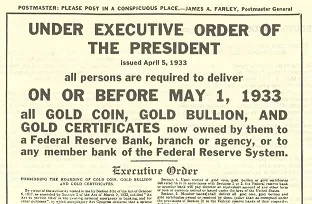 March 4th. Roosevelt’s first act was to declare a national bank holiday on March 6th, 1933. Indeed, had people not been moved to panic withdrawing their money from banks in coin, there would hardly be a $20 gold coin still in existence today. When the banks were close during FDR’s Bank Holiday, they were all ordered to turnover their gold to the government by his Executive Order April 5th, 1933 with the deadline of May 1st, 1933.
March 4th. Roosevelt’s first act was to declare a national bank holiday on March 6th, 1933. Indeed, had people not been moved to panic withdrawing their money from banks in coin, there would hardly be a $20 gold coin still in existence today. When the banks were close during FDR’s Bank Holiday, they were all ordered to turnover their gold to the government by his Executive Order April 5th, 1933 with the deadline of May 1st, 1933.

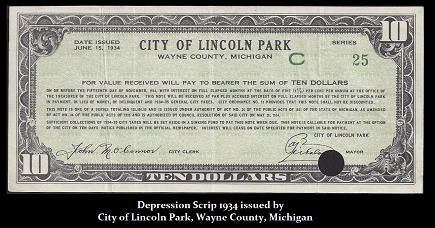 It was during the Great Depression where we now see this concept of issuing private script extend from Clearing Houses to more than two hundred cities. Here is what has been known as Depression Scrip from the United States. Unlike the Clearing House certificates and checks, these were issued by local governments and were not backed by assets. While the banks were being progressively reopened, the birth of the FDIC insurance program for bank deposits did not take effect until January 1st, 1934 with a limit of $2,500. This was raised to $5,000 in 1935 because many people would still not return to the banking system. By August 1933, about $2 trillion in paper currency had returned to the banks. However, the predominant size note was $50, which was clearly a large denomination used for hoarding not everyday commerce.
It was during the Great Depression where we now see this concept of issuing private script extend from Clearing Houses to more than two hundred cities. Here is what has been known as Depression Scrip from the United States. Unlike the Clearing House certificates and checks, these were issued by local governments and were not backed by assets. While the banks were being progressively reopened, the birth of the FDIC insurance program for bank deposits did not take effect until January 1st, 1934 with a limit of $2,500. This was raised to $5,000 in 1935 because many people would still not return to the banking system. By August 1933, about $2 trillion in paper currency had returned to the banks. However, the predominant size note was $50, which was clearly a large denomination used for hoarding not everyday commerce.
The Great Depression Scrip began to appear in 1930 and there were many stories written trying to describe all the various forms of substitute money that appearing. Some scrip was issued backed by expected taxes. This variety we refer to an Anticipation Depression Scrip – issued in anticipation of collecting future taxes.
Two-Tire Monetary Systems have also existed with the distinction between gold and silver. In Florence, Italy, the gold Florin, as it was known, was used in international trade. Domestically, wages were paid in silver. Merchants were required to maintain two sets of books, one for gold transaction externally in international trade and the other calculated in silver for local expenses.
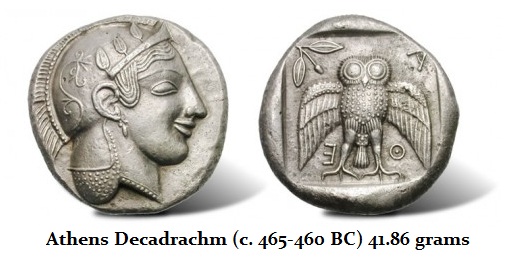 In ancient times, we do see large denomination coins both in silver and in gold, which were too high in value for circulation in day to day transactions. In Athens, they produced Decadrachms, which were equal to 10 drachms of the Attic weight standard (roughly 4.3 grams), and as such tend to weigh between 42 and 43 grams. These are mostly discovered outside of Athens typically in trade ports. Clearly, large denomination currency united were typically used for international trade and thus formed a quasi-Two-Tier style monetary system. We see the same practice with modern currency where this $10,000 1934 bill was obviously to facilitate international trade before there were really wire transfers.
In ancient times, we do see large denomination coins both in silver and in gold, which were too high in value for circulation in day to day transactions. In Athens, they produced Decadrachms, which were equal to 10 drachms of the Attic weight standard (roughly 4.3 grams), and as such tend to weigh between 42 and 43 grams. These are mostly discovered outside of Athens typically in trade ports. Clearly, large denomination currency united were typically used for international trade and thus formed a quasi-Two-Tier style monetary system. We see the same practice with modern currency where this $10,000 1934 bill was obviously to facilitate international trade before there were really wire transfers.
During the televised Third Debate between John F. Kennedy and Richard Nixon during the Presidential election of 1960, the question about the outflow of gold from the USA reserves took place and set off a financial panic in the London gold market and elsewhere whereby gold rallied as high as almost $36 in London and reaching nearly $40 for the first time in other forums. The was the first crack showing that the Bretton Woods System was indeed collapsing for the one thing that history has proven is you cannot fix anything in a specific price indefinitely. The United States outflow of gold was not really from a trade deficit, but from the fact that the USA was defending the world with its military establishing bases everywhere. That meant capital was leaving. Kennedy responded to a question on monetary policy, which set off the panic.
“Now on the question of gold. The difficulty, of course, is that we do have heavy obligations abroad, that we therefore have to maintain not only a favorable balance of trade but also send a good deal of our dollars overseas to pay our troops, maintain our bases, and sustain other economies. In other words, if we’re going to continue to maintain our position in the sixties, we have to maintain a sound monetary and fiscal policy.”
The 1960 Panic in Gold shook the foundations of the Monetary System. The London Gold Pool was thus established in response to that event to make sure no such panic would take place again. The idea was that the pooling of gold reserves by a group of eight central banks would be able to control the marketplace, not much different from the 1985 Plaza Accord that created the Group of 5 (G5). This was to include the United States and seven European countries. The accord was reached on November 1st, 1961 to cooperate in maintaining the Bretton Woods System of fixed-rate convertible currencies and defending a gold price of US$35 per troy ounce by interventions in the London gold market.

 Nevertheless, 1960 Gold Panic was an early warning sign that confidence was beginning to erode in the fixed-rate system of Bretton Woods. The long-term pressure of inflation was first felt in the silver market. President Kennedy issued an Executive Order 11110 on June 4th, 1963. This executive order delegated to the Secretary of the Treasury the President’s authority to issue silver certificates under the Thomas Amendment of the Agricultural Adjustment Act, as amended by the Gold Reserve Act. The order allowed the Secretary to issue silver certificates, if any were needed, during the transition period under President Kennedy’s plan to eliminate silver certificates. On November 28th, 1961, President Kennedy halted sales of silver by the Treasury Department. It was the consisted increase in demand for silver as an industrial metal, which had led to an increase in the market price of silver above the United States government’s fixed price. This led to a decline in the government’s excess silver reserves by over 80% during 1961. President Kennedy also called upon Congress to phase out silver certificates in favor of Federal Reserve notes. The last issue of Silver Certificates was that of 1957 Series.
Nevertheless, 1960 Gold Panic was an early warning sign that confidence was beginning to erode in the fixed-rate system of Bretton Woods. The long-term pressure of inflation was first felt in the silver market. President Kennedy issued an Executive Order 11110 on June 4th, 1963. This executive order delegated to the Secretary of the Treasury the President’s authority to issue silver certificates under the Thomas Amendment of the Agricultural Adjustment Act, as amended by the Gold Reserve Act. The order allowed the Secretary to issue silver certificates, if any were needed, during the transition period under President Kennedy’s plan to eliminate silver certificates. On November 28th, 1961, President Kennedy halted sales of silver by the Treasury Department. It was the consisted increase in demand for silver as an industrial metal, which had led to an increase in the market price of silver above the United States government’s fixed price. This led to a decline in the government’s excess silver reserves by over 80% during 1961. President Kennedy also called upon Congress to phase out silver certificates in favor of Federal Reserve notes. The last issue of Silver Certificates was that of 1957 Series.
The fixed exchange rate system was clearly still under pressure. Politicians resisted recognizing this trend, but the free markets were applying the check and balance against a failed system. The 1960 Gold Panic actually exposed the fundamental problem. The government fixed the price of gold in dollars at $35, but they continued to create more dollars as Kennedy pointed out building all these military bases around the world. The economic pressure began to build once again now in 1968, about 3.14 years from the abandonment of silver in the coinage in 1965.
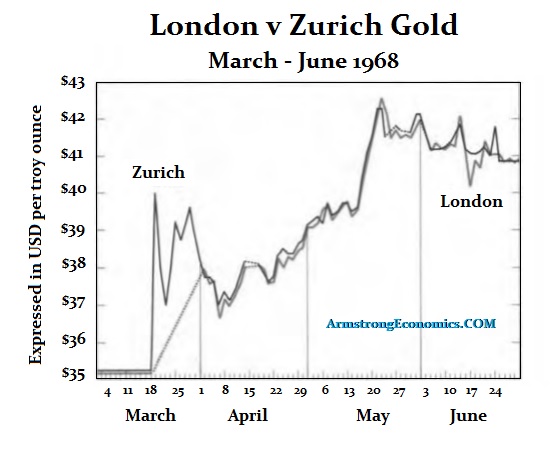 By the end of February demand for gold in both Zurich and London increased to very high levels. The demand for gold was not relieved by an announcement of the selling members of the Gold Pool who met at the Bank for International Settlements in Basle on March 10th, 1968. The public announcement said that “the central banks contributing to the London gold pool reaffirmed their determination to continue their support to the pool based on the fixed price of $35 per ounce of gold.”
By the end of February demand for gold in both Zurich and London increased to very high levels. The demand for gold was not relieved by an announcement of the selling members of the Gold Pool who met at the Bank for International Settlements in Basle on March 10th, 1968. The public announcement said that “the central banks contributing to the London gold pool reaffirmed their determination to continue their support to the pool based on the fixed price of $35 per ounce of gold.”
As typical, government tries to scare the market with its statements. The public didn’t buy it and the demand for gold simply exploded rising to a whole new level of panic proportions. They made a decision to close the London gold market on March 15th, 1968 trying to stop the drain on official monetary reserves. That was taken as a confirmation that the central banks were weak and could not meet the demand.
 An urgent meeting took place Washington on March 16th and 17th, 1968, which I will refer to as the 1968 Washington Gold Panic Meeting. There the selling members of the gold pool capitulated and decided to stop supplying gold from monetary reserves to the London gold market or any other gold market. The strings were cut and the free market won. The London market remained closed until April 1st, 1968 to allow the market to regain its stability in hopes that the panic would subside.
An urgent meeting took place Washington on March 16th and 17th, 1968, which I will refer to as the 1968 Washington Gold Panic Meeting. There the selling members of the gold pool capitulated and decided to stop supplying gold from monetary reserves to the London gold market or any other gold market. The strings were cut and the free market won. The London market remained closed until April 1st, 1968 to allow the market to regain its stability in hopes that the panic would subside.
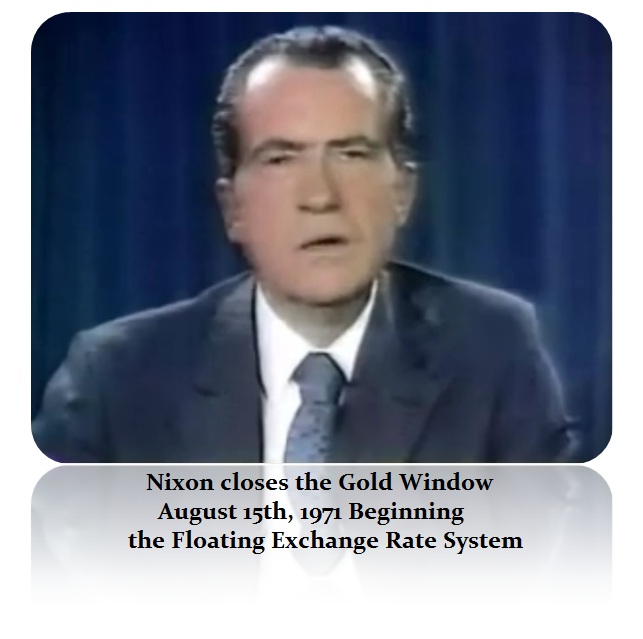 When the London Gold Market reopened, the private purchase and sale of gold was carried out at free market rates, the first time since the Great Depression. There were now two daily price fixings that were established – the AM and PM fix. For most of the month following the reopening of the market, trading was light. At first, gold fell back down with the first fixing upon reopening being set at $38.00. Zurich had remained open and was not impacted by the Gold Pool. During the London closure, gold had soared to $40. Therefore, when London reopened, the $38 price was still an 8% increase from the closing price on March 14th, 1968.
When the London Gold Market reopened, the private purchase and sale of gold was carried out at free market rates, the first time since the Great Depression. There were now two daily price fixings that were established – the AM and PM fix. For most of the month following the reopening of the market, trading was light. At first, gold fell back down with the first fixing upon reopening being set at $38.00. Zurich had remained open and was not impacted by the Gold Pool. During the London closure, gold had soared to $40. Therefore, when London reopened, the $38 price was still an 8% increase from the closing price on March 14th, 1968.
By mid-May, however, the demand for gold became very heavy again and by May 21st, 1968, the price of gold reached $42.60 on the London market. Thereafter, demand moderated and prices fell to about $41 a fine ounce in the last week of June. Gold eventually fell back to $34.70 going into 1970 just before the entire Bretton Woods system collapsed on August 15th, 1971 when Richard Nixon closed the gold window at the Treasury.
South Africa’s offer to sell gold to the International Monetary Fund and by the desire of many European central banks to purchase gold from South Africa for addition to monetary gold stocks to defeat the dollar, contributed to the collapse of the Gold Standard. The longer-term significance of the 1968 Washington Gold Panic Meeting was that the two-tier system it represented at that time abandoning the Gold Pool, was an important step toward diminishing the role of gold in the international monetary system. In September 1973, the price of gold was officially raised to $42.22. However, the technical devaluation of the dollar was insufficient and uneventful. Within two weeks of the second devaluation the dollar was left to float. In October 1976, the government officially changed the definition of the dollar and any references to gold were removed from statutes. The two-tier gold system set up in 1968, was merely temporary and was simply a step along the way to total collapse.
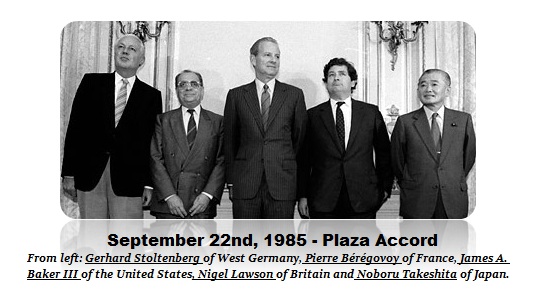 An important example of an official deliberate two-tier monetary system is the modern monetary history of South Africa. Until the late 1960s, South Africa had a fixed exchange rate for its currency. The the rand was pegged to major foreign currencies as was the case under the Bretton Woods system. In 1979 the government switched to a system that formally expressed parity against the dollar. The value of the rand followed changes in the balance of payments and moved roughly with sterling and other weaker currencies until 1985 when the dollar soared and the birth of the Plaza Accord took place.
An important example of an official deliberate two-tier monetary system is the modern monetary history of South Africa. Until the late 1960s, South Africa had a fixed exchange rate for its currency. The the rand was pegged to major foreign currencies as was the case under the Bretton Woods system. In 1979 the government switched to a system that formally expressed parity against the dollar. The value of the rand followed changes in the balance of payments and moved roughly with sterling and other weaker currencies until 1985 when the dollar soared and the birth of the Plaza Accord took place.
The foreign-debt crisis of that year caused the rand to depreciate at a spectacular rate, and it fell to an all-time low of less than 40 cents to the US$. The rand recovered somewhat in 1987, reaching 43 cents, but it declined steadily thereafter. The rand collapsed to about 26 cents against the US$ in late 1995. Between February 1st, 1996 and May 1st, 1996, the rand lost roughly 16% of its exchange value, falling from R3.7 to R4.33 = US$1, or a value of about 23 cents to the US$.
The government realized that its domestic policy objectives were incompatible with international investment. They then created a parallel currency to act as a two-tier currency unit they named the “financial rand”. Theis hybrid currency was used exclusively for the movement of nonresident capital during the 1980s and the early 1990s. Financial rands developed out of currency-exchange controls instituted in the early 1960s, known as the “blocked rand.” The financial rand was available only to foreigners for investment in South Africa and was created by the sale of nonresidents’ assets in the country.
Therefore, South Africa created a formal two-tiered currency system, which insulated the country’s foreign reserves from politically motivated capital flight. Since any divestment by nonresidents was automatically met by new investment, and the price of the financial rand varied independently of the commercial rand, a stability was achieved. Financial rands invariably stood at a discount to commercial rands, but the size of the discount depended on South Africa’s relative attraction as an investment destination. The discount stood at almost 40% during most of 1992 during the political crisis. The Convention for a Democratic South Africa (CODESA) began in December 1991 at the Johannesburg World Trade Center, attended by 228 delegates from 19 political parties. Mandela remained a key figure and after de Klerk used the closing speech to condemn the ANC’s violence, he took to the stage to denounce de Klerk as the “head of an illegitimate, discredited minority regime”. This confrontation sent the rand into collapse. CODESA 2 was held in May 1992, at which de Klerk insisted that post-apartheid South Africa must use a federal system with a rotating presidency to ensure the protection of ethnic minorities. Mandela opposed this idea and demanded a unitary system governed by majority rule. Following the Boipatong massacre of ANC activists, Mandela called off all negotiations, and called for a special session of the UN Security Council and proposed that a UN peacekeeping force be stationed in South Africa to prevent “state terrorism”. Calling for domestic mass action, in August the ANC organised the largest-ever strike in South African history, and supporters marched on Pretoria. The rand declined to about 20% by late 1993.
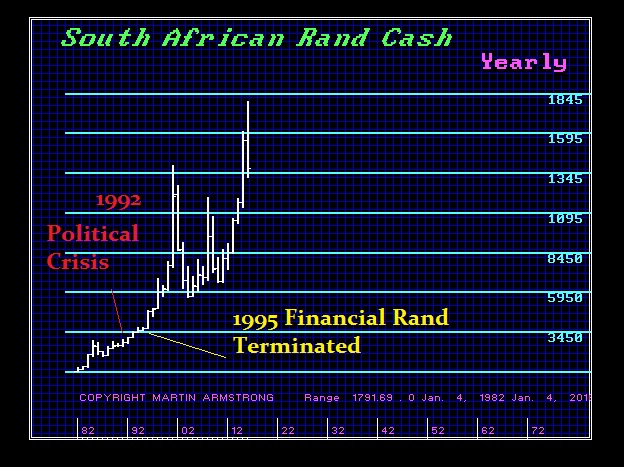 Reserve Bank governor Chris Stals, under pressure from the banking and business communities, said that the government would phase out the financial rand in 1994 or 1995, assuming that South Africa’s foreign currency reserves reached at least R20 billion and that the discount between the financial and the commercial rands narrowed to about 10%. Foreign currency reserves were low in early 1994 but thanks to a dramatic reversal of the capital outflow in 1993, foreign currency reserves increased throughout 1994 and into early 1995. Finally, by March 1995, with foreign reserves of only about R12 billion, the government abolished the financial rand. The newly unified currency began to trade on international currency markets, marking a vote of confidence in South Africa’s business potential.
Reserve Bank governor Chris Stals, under pressure from the banking and business communities, said that the government would phase out the financial rand in 1994 or 1995, assuming that South Africa’s foreign currency reserves reached at least R20 billion and that the discount between the financial and the commercial rands narrowed to about 10%. Foreign currency reserves were low in early 1994 but thanks to a dramatic reversal of the capital outflow in 1993, foreign currency reserves increased throughout 1994 and into early 1995. Finally, by March 1995, with foreign reserves of only about R12 billion, the government abolished the financial rand. The newly unified currency began to trade on international currency markets, marking a vote of confidence in South Africa’s business potential.

